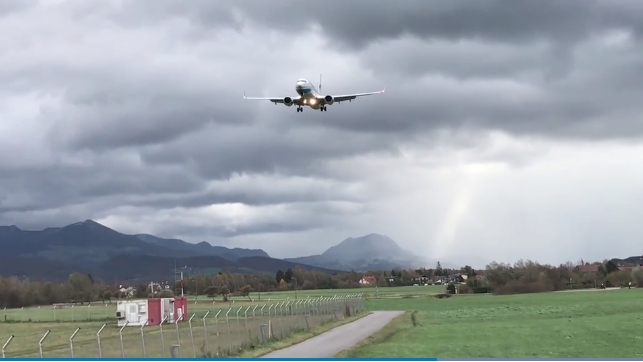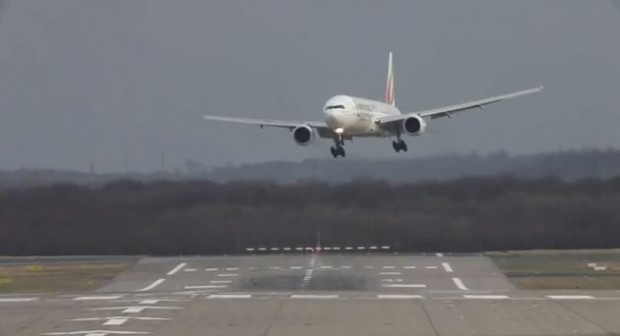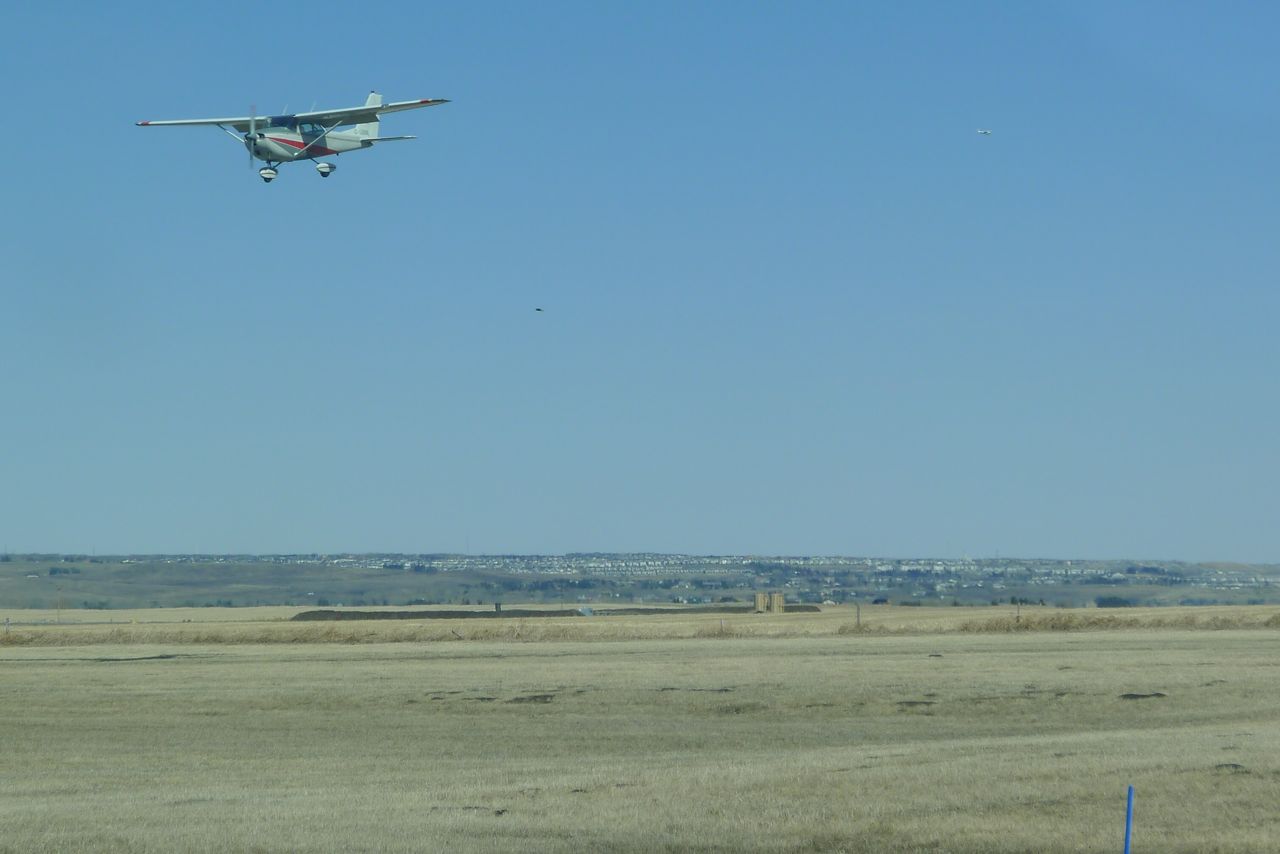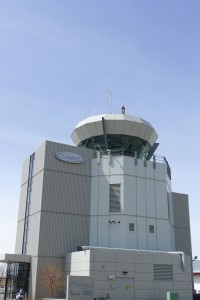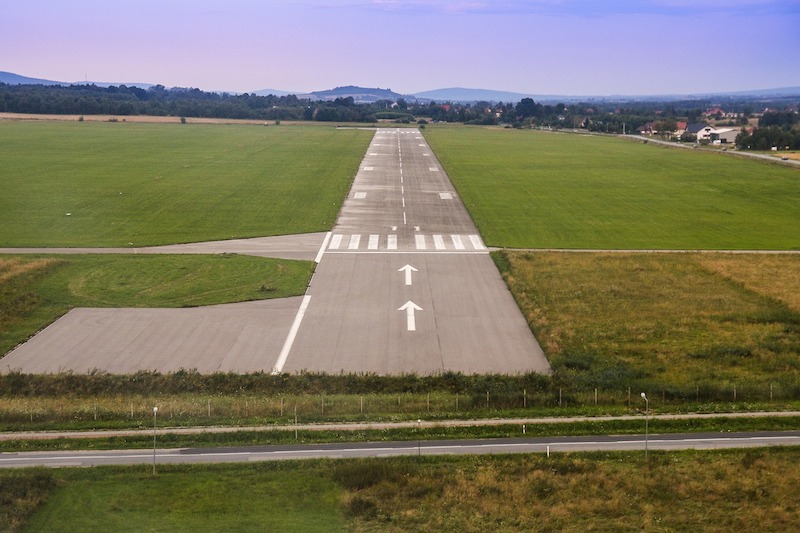
There are a very large number of uncontrolled aerodromes in Canada where no control tower operates. Also, some controlled aerodromes are uncontrolled at certain hours, if tower closes. For example the CFS may indicate the control tower is closed from 0000 to 0600 daily, so you’ll have to follow uncontrolled procedures during that time period. If you’re not being directed by air traffic control (ATC), you’ll need to know how to plan your approach. It’s important to think of the approach procedure in advance, visualizing it before you go. Make sure you do this. Try visualizing using “chair flying” at home before you head out.
At some uncontrolled aerodromes with an appreciable amount of traffic, Transport Canada may assign a Mandatory Frequency (MF) or Aerodrome Traffic Frequency (ATF) that you must use. Make sure you have these frequencies ready when you plan to land at one of these uncontrolled airports. When an MF or ATF is designated, it applies to an area with about a 5 NM radius, so when you’re in that radius, make sure you’re active and listening on that frequency. Also, it’s illegal to operate NORDO (with no radio) in an area with an ATF or MF. I’m not sure why someone would want to fly without a radio anyhow, it sort of makes me nervous!
Unless otherwise indicated, assume all circuits are left-hand and plan for those accordingly.
How to plan your approach
First, you must exchange communication through one of these frequencies, ATF or MF if applicable, if not, a Flight Service Station (FSS) or through the Universal Communications frequency (UNICOM). You’ll need to check your Canada Flight Supplement (CFS) and Aeronautical Information Manual (AIM) for current requirements.
You’ll need to make five radio calls:
- Report 5 minutes out your location, approach procedure, and estimated time over the field;
- Report when crossing midfield (this is done 500 feet over circuit altitude, generally 1500 AGL). This is to inspect the runway to ensure it’s suitable for landing and do a wind sock check to choose the appropriate runway direction. This is know what type of landing you need to plan, and try to have as much headwind as possible, or if you need to plan a cross wind landing;
- Report when joining downwind leg;
- On final,
- Then lastly, report when clear of active runway after landing.
This image, from Transport Canada, outlines it nicely:
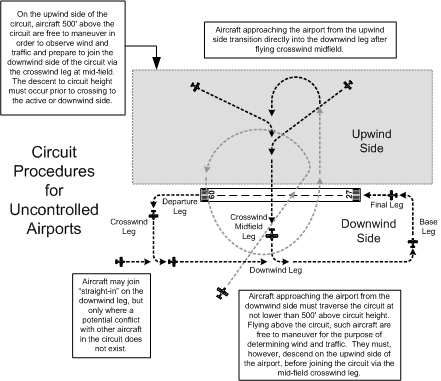
Also see VFR procedures at uncontrolled airports diagram by Transport Canada, it’s very helpful.
Departure procedures
Departure procedures are simple. You’ll also need to broadcast your intentions, of course, and climb to circuit altitude, typically 1000′ AGL, before making any turns.
Did you know?
CARS, Canadian Aviation Regulations state you’re not allowed to overfly an aerodrome less than 2000 feet above that aerodrome. Just something to note when planning cross country flights.
I fly out of a very busy airport, Springbank (CYBW), near Calgary, which is usually number 6 or 7 busiest in Canada for aircraft movements. To fly out of Springbank, you’ll need to talk to ground, inner tower, outer tower, then Calgary Terminal, before being cleared enroute. So, flying into a much quieter uncontrolled aerodrome is strangely quiet, and takes some getting used to.
Do you prefer towered or non-towered airports, and why? Comment below.
